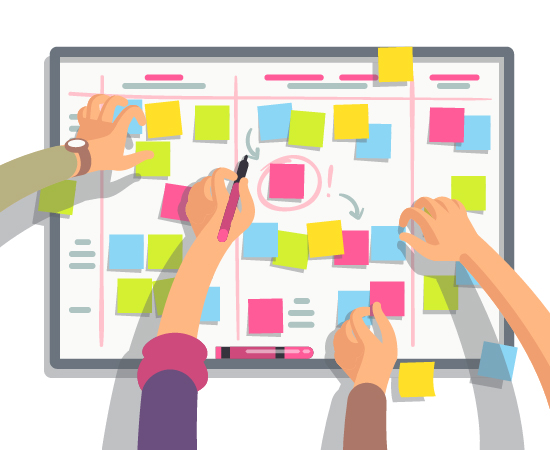Project Planning 101: Concept Phase
 Graphic by MicrovOne
Graphic by MicrovOne
1 year, 9 months ago
For Owners in every construction market, successful projects begin with a clear understanding of your organization’s needs and goals
By Craig T. Neises
Carl A. Nelson & Company
No matter how big or small, the genesis of every construction project is the moment when a need is identified. As projects scale up, however, so does the level of effort required to determine the exact nature of the need and to come up with the best way to address it.
For Owners, determining where or whether to build a facility, renovate one or myriad other choices requires a detailed planning process before design is undertaken or construction can begin. To help guide our clients through the conceptual planning that may lead eventually to a construction project, Carl A. Nelson & Company (CANCO) offers the following set of key considerations to help you arrive at the best path to meeting your organization’s needs.
Strategic Planning/Master Planning
A routine process of planning for the future, whether undertaken continuously, on a two- to five-year cycle or by some other metric, can provide an important foundation for identifying future conditions that will influence infrastructure decisions. This process begins by identifying and bringing together key leaders within your organization to initiate a strategic planning process.
Through data analysis and input from stakeholders, the mission of this leadership group will be to review current operating conditions and to weigh future risks and opportunities in the marketplace. With this information, the group will help decision-makers within the organization to determine goals, opportunities to achieve them, and timelines for accomplishing them.
Need Identification/Needs Assessment
With guidance from the updated strategic plan, leaders and stakeholders can begin a process of determining the best means to address identified needs and meet the organization’s goals. This is an opportune time to bring in the budget and space programming expertise of a design-builder or construction manager.
The first step in this process relative to building infrastructure is to determine whether existing facilities are adequate to meet the mission now or into the future. In other words, does the organization currently possess the necessary footprint, layout and systems to meet anticipated growth or changes in services? Even if the answer is yes, it may remain necessary to engage construction services to make building modifications for improved efficiency and to install new or relocated equipment.
If the answer is no, and additional facility infrastructure will be required to achieve your organization’s goals, there are several options to weigh:
- Condition of existing facilities and their suitability for expansion or retrofit;
- Availability and suitability of on- or off-site ground for expansion;
- Opportunities — through lease or purchase — to acquire and repurpose an existing facility in another location; or to consolidate operations in an existing or new location.
Once a direction is selected from the available options, the next step at this level of planning is to prioritize projects, choose the intended project site and determine funding before proceeding any further toward construction.
Select Project Delivery Method
When the strategic planning and needs assessment process turns toward undertaking a construction project, be it a whole new facility or addition, renovation or reconfiguration at an existing building, your first step as an owner should be to decide how to procure construction and design of the project.
This is known as the project delivery method. Ownership type determines which of the available options will offer the best prospect for project success.
Design-Build: Available to private sector organizations everywhere, as well as public owners in all but four states (including Iowa), Design-Build has been shown in repeated studies by Penn State University to offer the greatest speed and cost savings of any method of construction procurement. This results from a contract structure where the Owner engages a design-build firm, such as Carl A. Nelson & Company, to lead the project in its entirety.
In this method, the design-builder selects the architects and other consultants, as well as major subcontractors, and manages their efforts in a team approach to design and construct the facility. This approach leads to greater team cohesion, opportunities to fast-track portions of the project and a single point of contact for the Owner. At Carl A. Nelson & Company, more than 40% of our annual construction volume is in the design-build delivery method. Within that design-build share, more than 80% of projects are for repeat clients.
Construction Management (CM): Available to public owners as well as private, construction management is the next-best option available because like design-build, it takes advantage of the builder’s expertise in cost, schedule and constructability. In this method, design and construction management services are contracted separately. For best results, early construction manager selection can help to ensure the project is designed to budget from the outset. At Carl A. Nelson & Company, our project managers are experienced in assisting clients with designer selection to obtain the best fit for your project.
In this method, our construction management team works alongside the design team to establish budget and schedule, as well as to review design for best-value outcomes. In the CM at-risk version of this delivery method, the construction manager acts as Owner advocate during the pre-construction phase, then acts as general contractor during construction and is able to bid and perform portions of the work. In the CM Agency method, which is intended for use by public clients, the construction manager acts as Owner advocate throughout the project.
These steps lead into next considerations including site evaluation, facility planning, preliminary budget and schedule and the start of design. In upcoming editions of the wibi newsletter, we will address those and other steps to completing a successful construction project. Meanwhile, to learn how Carl A. Nelson & Company’s team of construction professionals can assist you at every stage of your project planning, call Dan Culp at (319) 754-8415, or email canco@carlanelsonco.com.